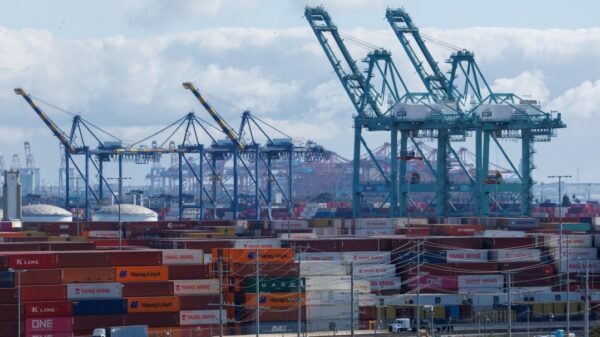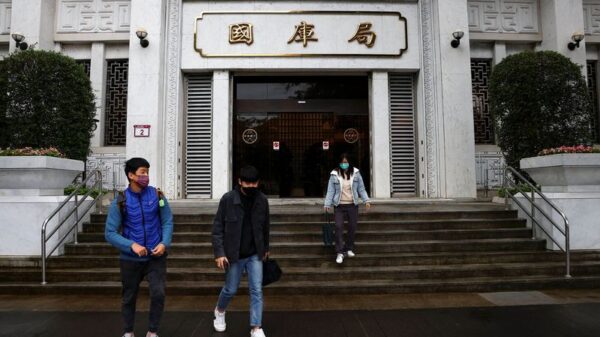Impact of New Tariffs on Port Operations
The Port of Los Angeles is facing substantial disruptions as a result of the newly imposed tariffs by the Trump administration, including a universal 10% tariff on all imported goods. This move has raised concerns about the future of U.S. port operations, particularly in major hubs like Los Angeles, which is one of the busiest and most critical ports in the world. The tariff has caused an immediate shift in how businesses manage their supply chains, with many reevaluating their sourcing strategies and anticipating increased costs. These disruptions are expected to have far-reaching implications, not only for the port but also for the broader Southern California economy.
Anticipated Decline in Cargo Volume
According to Gene Seroka, the Executive Director of the Port of Los Angeles, the port is expected to experience a 10% decline in cargo volume starting in the latter half of 2025. The anticipated drop in cargo volume is attributed to several factors, including early inventory adjustments and rising costs resulting from the new tariffs. Businesses are already altering their sourcing strategies in response to these changes, leading to a reduction in the overall flow of goods into the U.S. port system. As a result, the Port of Los Angeles, along with other key U.S. ports, may face significant operational challenges in maintaining their current pace of activity.
Increased Costs Prompt Businesses to Reconsider Sourcing
The newly imposed tariffs have led to a marked increase in the cost of imported goods, prompting many businesses to rethink their sourcing strategies. Manufacturers and retailers who depend on affordable imports are feeling the pressure of rising prices, especially for key goods such as electronics, machinery, and consumer products. The tariff’s effect on sourcing decisions may lead companies to explore alternatives such as reshoring or diversifying their supply chains to countries with more favorable trade relations. However, such adjustments are costly and time-consuming, and may further contribute to the slowdown in port activity.
The Ripple Effect on Southern California’s Economy
The downturn in port operations poses a significant threat to Southern California’s economy, which relies heavily on the Port of Los Angeles. With one in nine jobs in the region tied to port operations, any disruption in port activity has the potential to impact thousands of workers and businesses. Jobs in logistics, transportation, warehousing, and manufacturing are particularly vulnerable to declines in cargo volume. A reduction in port activity may lead to layoffs, reduced work hours, and lower overall economic output in the region, compounding the negative effects of the tariff-induced disruptions.
Challenges for Global Supply Chains
The new tariffs also present challenges for global supply chains, which have become increasingly interconnected in recent years. Many goods that enter the U.S. through the Port of Los Angeles are part of complex, multi-country supply chains, and the imposition of tariffs creates additional friction within these networks. The increased costs and delays at the port may lead to ripple effects across global markets, affecting manufacturers and consumers worldwide. Furthermore, companies may need to seek out alternative shipping routes or ports, further straining the global shipping industry.
Potential Long-Term Consequences for Port Operations
The long-term consequences of these tariff-driven disruptions to the Port of Los Angeles could be far-reaching. If the decline in cargo volume continues throughout 2025 and beyond, the port may face lasting operational challenges, including reduced revenue and capacity underutilization. The strain on port infrastructure could also result in less efficient operations and increased congestion, further exacerbating delays and increasing costs for businesses that rely on timely deliveries. The long-term financial health of the port could be compromised, prompting calls for government intervention or the exploration of alternative revenue streams to offset potential losses.
Looking Ahead: Strategic Adjustments and Potential Solutions
As the Port of Los Angeles grapples with the fallout from the new tariffs, both public and private sector stakeholders will need to explore strategic adjustments to mitigate the impact of declining cargo volume. This may include finding ways to streamline port operations, invest in infrastructure upgrades, or attract alternative sources of trade. Additionally, businesses may need to collaborate with port authorities to develop more efficient ways to handle the flow of goods and reduce the overall costs of logistics. While the immediate future remains uncertain, proactive measures may help ease the burden on Southern California’s economy and port operations in the long term.
Conclusion: Navigating the Challenges of New Tariffs
In conclusion, the new tariffs imposed by the Trump administration are significantly disrupting port operations at the Port of Los Angeles, with a 10% decline in cargo volume expected later in 2025. Businesses are already adjusting their sourcing strategies in response to increased costs, which, in turn, is putting pressure on Southern California’s economy. The ripple effects of these disruptions are likely to impact the global supply chain as well, creating lasting challenges for the region’s port infrastructure. Moving forward, the key will be for stakeholders to adapt strategically and implement measures to minimize the long-term effects of these tariff-induced challenges. The future of the Port of Los Angeles and Southern California’s economy will depend on how quickly the region can adjust to these new realities.




































